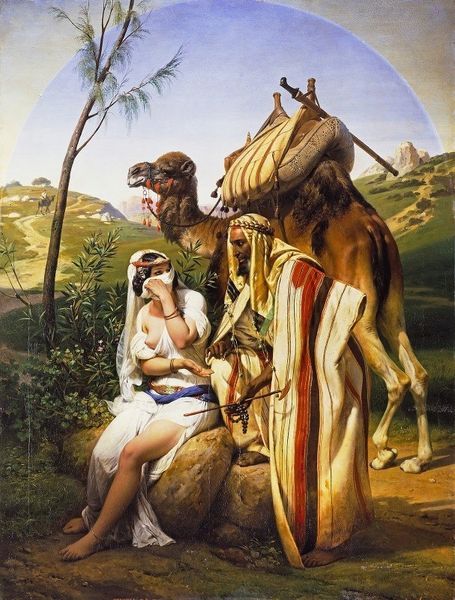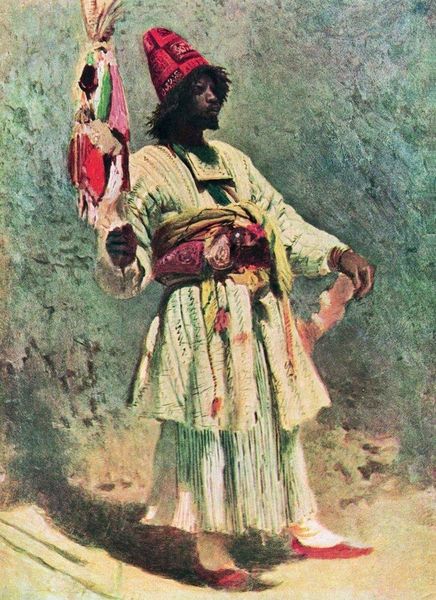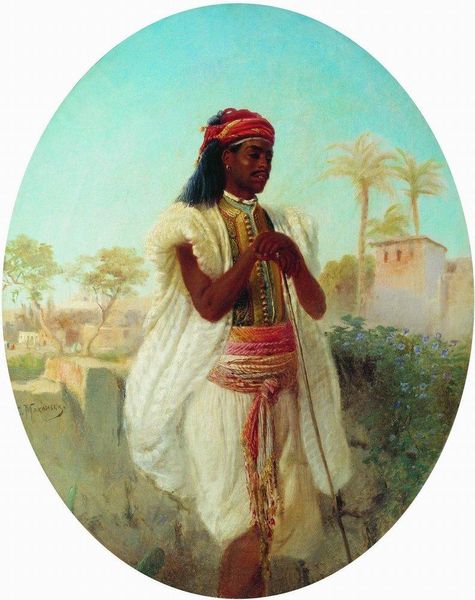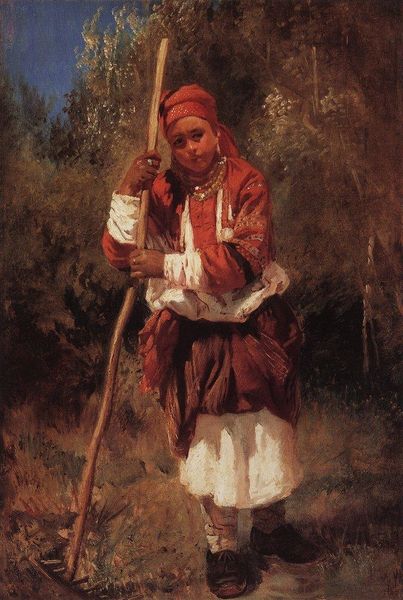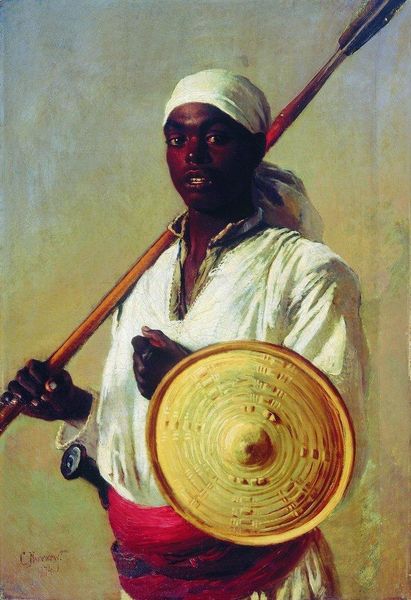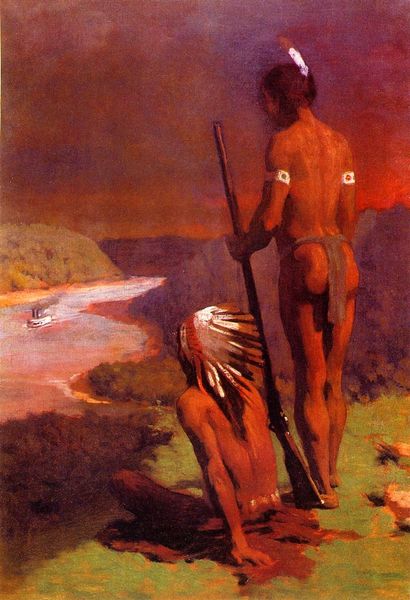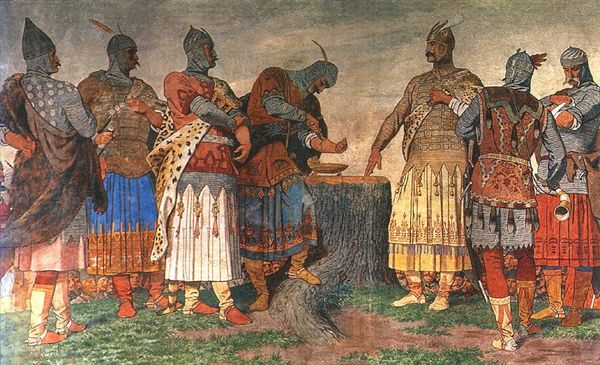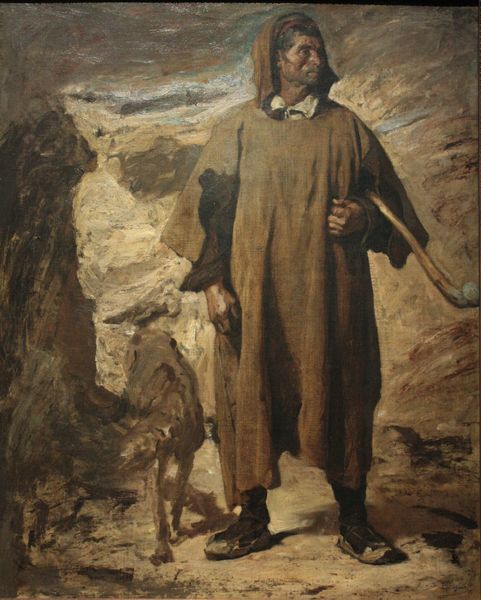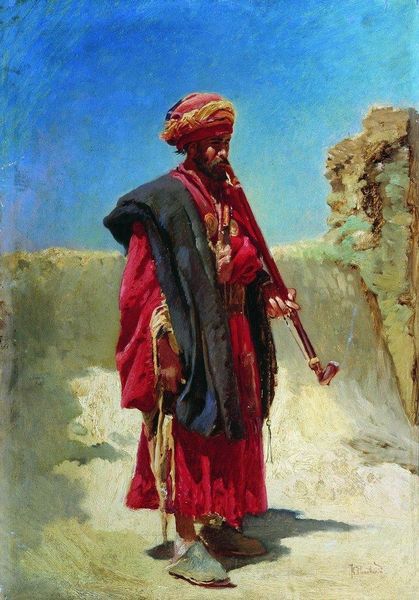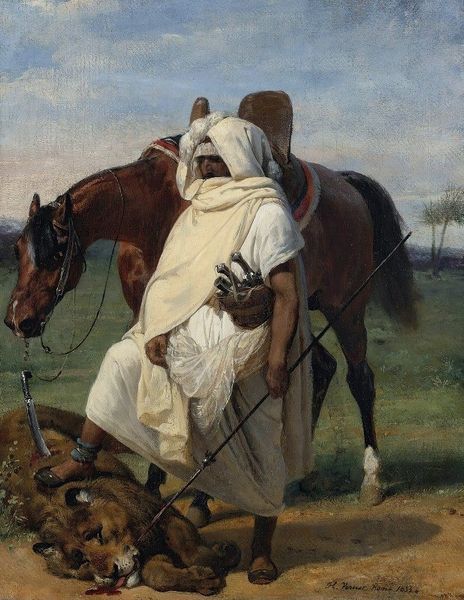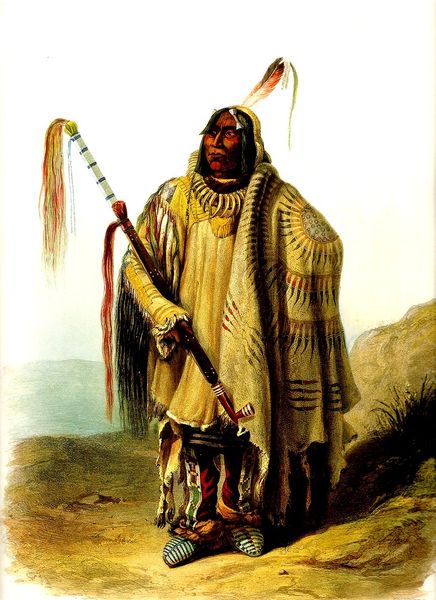
Copyright: Public domain
Curator: Jean-Léon Gérôme's 1871 oil painting, "The Negro Master of the Hounds," presents a striking figure surrounded by his dogs within an exotic landscape. Editor: It evokes a sense of languid authority, doesn't it? The composition centres the figure and there is this balance between the formality of the pose and the relaxed atmosphere. Curator: Indeed. The composition certainly employs visual strategies to command attention. The layering of the figures—the man in the foreground with the dogs arranged around him—creates a structured, almost pyramidal effect. The colour palette is really quite something too. Editor: Absolutely, though this piece reflects a period when European artists depicted non-Europeans. One must consider the orientalist tropes. Gérôme wasn't merely representing; he was participating in a visual discourse that served colonial ambitions. Curator: Precisely. Considering those issues, his mastery of light and shadow is particularly important. It adds a depth and texture to the clothing and rendering of skin tones. You could almost reach out and touch it, it's all so tactile. What is the value of that fidelity, do you think? Editor: In light of the work's colonial setting, it raises concerns about exoticizing the “other." The very title suggests the individual is reduced to his profession. He is labeled in relation to his role concerning the hunt, a narrative tool of the colonizers at that moment in time. It also shows the power dynamic and assumptions present in that period. Curator: That’s well noted. Looking again, there's an intentional contrast, not just in colour, but in texture and line as well. Look at the smoothness of the clothing next to the foliage. Editor: His rendering almost suggests a dream state with this tension between vivid detail and the soft atmospheric quality. This really gives an unsettling tone. It speaks volumes about the colonial project of representing distant lands and their inhabitants. Curator: And ultimately, examining how form contributes to the overall content is what unlocks greater perspectives of a particular piece. Editor: Absolutely. Engaging with the social and historical context enriches the artistic experience, it ensures a much more complete picture for the audiences.
Comments
No comments
Be the first to comment and join the conversation on the ultimate creative platform.
